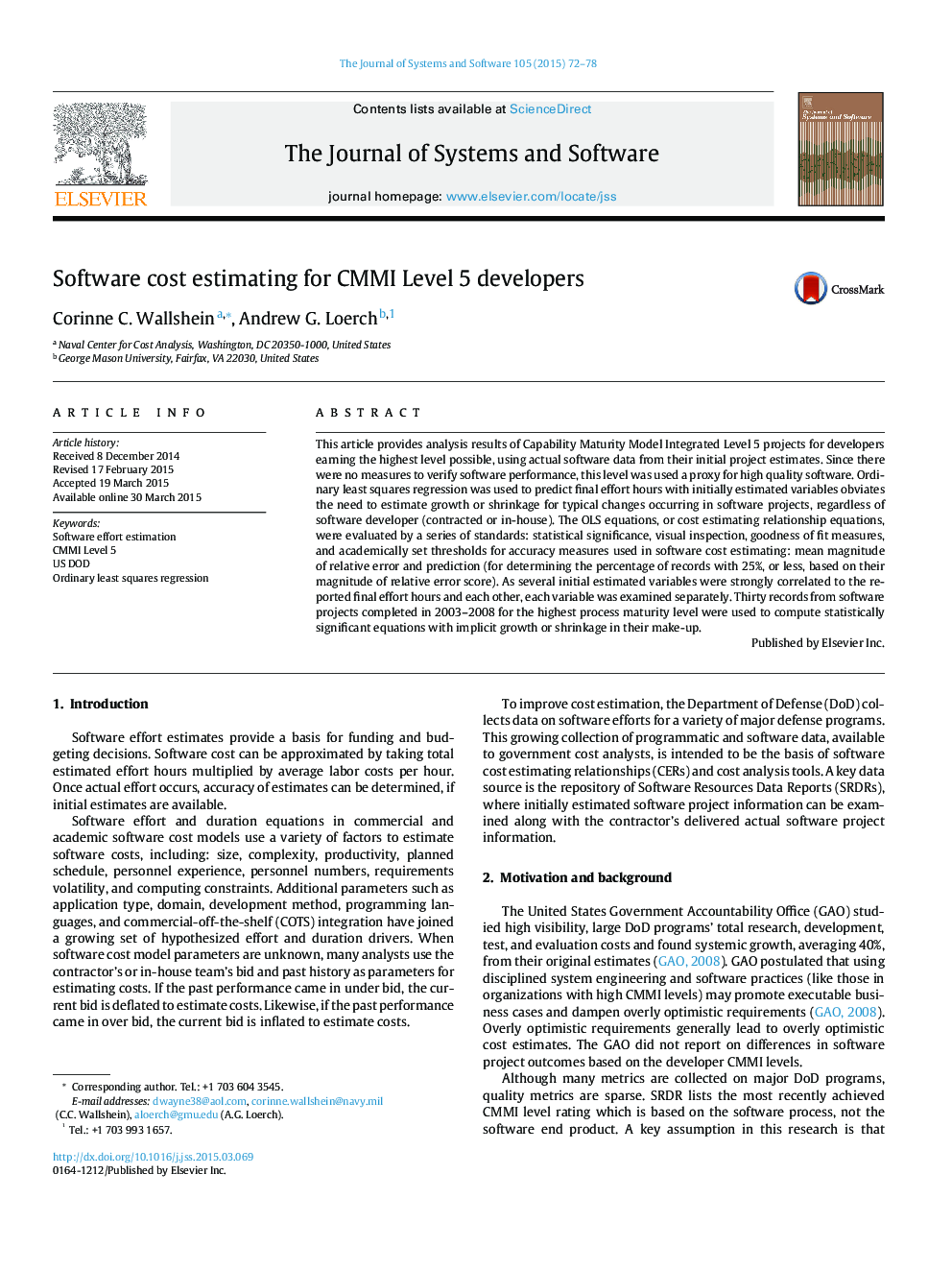| Article ID | Journal | Published Year | Pages | File Type |
|---|---|---|---|---|
| 6885613 | Journal of Systems and Software | 2015 | 7 Pages |
Abstract
This article provides analysis results of Capability Maturity Model Integrated Level 5 projects for developers earning the highest level possible, using actual software data from their initial project estimates. Since there were no measures to verify software performance, this level was used a proxy for high quality software. Ordinary least squares regression was used to predict final effort hours with initially estimated variables obviates the need to estimate growth or shrinkage for typical changes occurring in software projects, regardless of software developer (contracted or in-house). The OLS equations, or cost estimating relationship equations, were evaluated by a series of standards: statistical significance, visual inspection, goodness of fit measures, and academically set thresholds for accuracy measures used in software cost estimating: mean magnitude of relative error and prediction (for determining the percentage of records with 25%, or less, based on their magnitude of relative error score). As several initial estimated variables were strongly correlated to the reported final effort hours and each other, each variable was examined separately. Thirty records from software projects completed in 2003-2008 for the highest process maturity level were used to compute statistically significant equations with implicit growth or shrinkage in their make-up.
Related Topics
Physical Sciences and Engineering
Computer Science
Computer Networks and Communications
Authors
Corinne C. Wallshein, Andrew G. Loerch,
